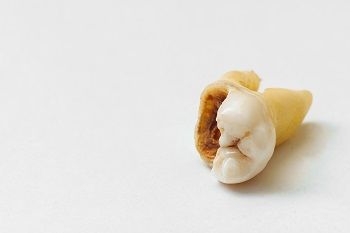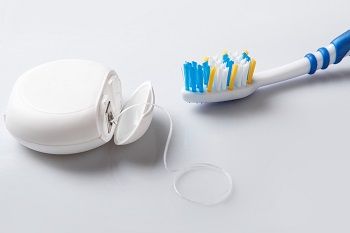What are dental fillings, and are they safe?
Dental Implants Solutions
Maintaining a healthy smile is essential; dental fillings are crucial in restoring teeth damaged by decay or trauma. These restorations may be small and unassuming, but they have been integral to dentistry for centuries, helping millions preserve their natural teeth and oral function.
Let's explore dental filling safety, debunk misconceptions, and make informed decisions about oral health.
What are dental fillings?
When a tooth develops a cavity (also known as dental caries or tooth decay), it creates a small hole or void in its hard outer layer, called enamel. If left untreated, the cavity can progress, leading to pain.
Dental fillings repair cavities and other types of damage in teeth. They are typically made from composite resin, porcelain, or silver amalgam. Fillings can help prevent further decay and can also be used to improve the appearance of teeth that have been damaged.
How Do I Know if I Need a Filling?
Knowing if you need a dental filling is essential for maintaining oral health. While only a dentist can provide a definitive diagnosis, several signs and symptoms may indicate the need for a filling. Here are some common indicators:
- Tooth Pain or Sensitivity: If you feel any pain or sensitivity in your teeth while eating or drinking hot or cold foods and drinks, it may indicate tooth decay or cavities that need filling.
- Visible Dark Spots or Holes: If you notice dark spots, pits, or holes on the surface of your teeth, it may indicate the presence of cavities. Tooth decay often starts as small spots and gradually progresses if left untreated.
- Chipped or Fractured Tooth: A chipped or fractured tooth may expose the inner layers of the tooth, making it more susceptible to decay. Your dentist may recommend you are filling to restore the damaged tooth structure.

- Rough or Uneven Tooth Surface: When tooth decay is in its early stages, you may notice rough or uneven areas on the tooth's surface. A dental filling can help restore the smooth and functional surface of the tooth.
- Pain When Biting or Chewing: Discomfort when biting or chewing may indicate a cavity or damage that requires a filling. It's essential to evaluate this by a dentist to prevent further complications promptly.
- Food Getting Stuck Between Teeth: If you frequently experience food getting trapped between certain teeth, it may indicate a cavity in the space between those teeth.
- Sudden Toothache: A sudden, persistent toothache, especially if localized to a specific tooth, may be a sign of decay or other dental issues that necessitate a filling.
- Previous Fillings Needing Replacement: If you have old dental fillings that are chipped, cracked, or worn down, they may need replacement to maintain their effectiveness and prevent further damage.
If you experience these signs or have concerns about your dental health, schedule an appointment with your dentist. Early evaluation and timely treatment can help preserve natural teeth and prevent more extensive dental problems.
Common Materials Used in Dental Fillings
Types of dental filling materials include:
- Amalgam Fillings (Silver Fillings): These fillings are a mixture of metals, including silver, tin, copper, and mercury. Amalgam fillings have been used for over a century and are known for their durability and cost-effectiveness. However, concerns have been raised about the mercury content, leading to a decline in their use in favor of other materials.
- Composite Resin Fillings (Tooth-Colored Fillings): These are made from plastic and glass materials. They are aesthetically pleasing as they look like the natural shade of the tooth, making them popular for visible areas of the mouth. Composite fillings are directly bonded to the tooth, which offers extra support.
- Glass Ionomer Fillings: These fillings are made from acrylic and glass materials. They are commonly used for small fillings, especially in areas with minimal bite force, such as around the gum line.
- Gold Fillings: These fillings are made from a gold alloy and are highly durable. However, they are more expensive than other filling materials and are typically used for specific cases, such as inlays and onlays. Choosing the right dental filling depends on the extent of damage, filling location, appearance preference, and dentist's advice.
Long-term Performance and Durability of Dental Fillings
Dental fillings' long-term performance and durability are crucial in determining their success in preserving tooth structure and maintaining oral health. Different filling materials have varying lifespans and may be affected by various factors. Let's explore the long-term performance and durability of dental fillings:
Amalgam Fillings: Amalgam fillings are known for their excellent durability and longevity. They can last long with good care and maintenance. Amalgam is particularly well-suited for use in the back teeth (molars) because of its ability to withstand the forces of chewing and grinding.
Composite Resin Fillings: The durability of composite resin fillings has significantly improved over the years due to advancements in dental materials and techniques. While they may be shorter than amalgam fillings, they still offer good longevity. On average, composite fillings can last around 5 to 10 years or more, depending on the location of the filling and the patient's oral hygiene habits.
Glass Ionomer Fillings: Glass ionomer fillings are generally less durable than amalgam and composite fillings. They are often used for small fillings and non-load-bearing areas. Their lifespan is typically around 5 to 7 years, but they may require replacement sooner in areas with higher chewing forces.
Gold Fillings: Gold fillings are renowned for their exceptional longevity. With proper care, gold fillings can last for decades or even a lifetime. They are highly resistant to wear and do not corrode. However, their high cost and aesthetics make them less commonly used than other filling materials.
Ceramic Fillings (Porcelain Fillings): Like gold fillings, ceramic fillings have an excellent track record for longevity. With proper care, ceramic fillings can last many years, making them durable for dental restorations.
Factors that can influence the long-term performance and durability of dental fillings include:
Oral Hygiene: Maintaining good oral hygiene through regular brushing, flossing, and mouthwash can help preserve the quality of dental fillings and prevent decay in the surrounding area.

Teeth Grinding (Bruxism): Patients who grind or clench their teeth (bruxism) may experience increased wear on their fillings. Dentists may recommend wearing a nightguard to protect the teeth and fillings.
Dietary Habits: Over time, consuming sugary or acidic foods and drinks can deteriorate fillings. Maintaining a balanced diet and limiting sugar and acidic intake is essential.
Regular Dental Check-ups: Routine dental check-ups allow dentists to monitor the condition of existing fillings and detect any signs of wear, chipping, or leakage early on.
Material Selection: The choice of filling material and its suitability for the specific tooth and location can significantly impact its long-term performance
Potential Risks and Side Effects of Dental Fillings
Although dental fillings are generally regarded as safe and effective, certain filling materials come with potential risks and side effects. Awareness of these factors is essential to make informed decisions about your dental treatment. Here are some of the potential risks and side effects of dental fillings:
- Allergic Reactions: People can be allergic to specific dental filling materials, including amalgam (which has metals) or components of composite resin fillings. Allergic reactions may vary from slight irritation to severe symptoms, such as swelling or a rash. If you have a history of metal allergies or sensitivities, inform your dentist before getting a dental filling.
- Tooth Sensitivity: After receiving a dental filling, some patients may experience tooth sensitivity to hot, cold, or sweet stimuli. This sensitivity is usually temporary and should subside within a few days or weeks. Sometimes, tooth sensitivity may persist, indicating potential issues like nerve irritation or an improper bite. If sensitivity persists, consult your dentist for further evaluation.
- Cracked or Fractured Fillings: Dental fillings can sometimes crack or fracture, especially if subjected to excessive force from teeth grinding (bruxism) or biting on hard objects. Cracked fillings may allow bacteria to enter the tooth, leading to further decay or sensitivity. Regular dental check-ups help identify and address any issues with existing fillings.
- Mercury Concerns (Amalgam Fillings): Although the American Dental Association (ADA) and the U.S. Food and Drug Administration (FDA) deem amalgam fillings safe for most people, there have been concerns about the potential release of mercury vapor from these fillings. However, numerous scientific studies have shown that the levels of mercury vapor released are very low and do not pose significant health risks for most patients. Still, some patients may prefer to avoid amalgam fillings due to these concerns.
- Discoloration (Composite Resin Fillings): Over time, composite resin fillings may become discolored due to exposure to staining substances like coffee, tea, tobacco, or certain foods. While they are color-matched to blend with natural teeth initially, they may need replacement if significant discoloration occurs.
- Leaking or Recurrent Decay: Dental fillings can sometimes leak or break down around the edges, allowing bacteria to re-enter the tooth and cause recurrent decay. Routine dental check-ups and proper oral hygiene are crucial to detect and address such issues early on.
- Chipping or Wear (Composite Resin Fillings): Composite fillings are durable but may experience chipping or wear over time, especially in areas with heavy chewing forces. Regular dental examinations can help identify and address any worn or damaged fillings.
If you have concerns about dental fillings or experience any unusual symptoms after a filling, don't hesitate to contact your dentist for evaluation and advice.
Conclusion
In conclusion, dental fillings are a vital and time-tested solution in restorative dentistry, offering a means to repair and preserve teeth affected by decay, trauma, or wear. They are crucial in maintaining optimal oral health and preventing tooth loss or infection complications. However, like any dental procedure, it is essential to consider the safety aspects to make informed decisions and ensure the best possible outcomes.
Remember, dental fillings are just one part of a comprehensive approach to oral health. Maintaining a healthy diet, practicing good oral hygiene, and seeking regular dental care are essential to preserving your natural smile.
Contact your dentist in Walnut Creek, Dr. Massood Darvishzadeh, at Dental Implant Solutions to learn about dental fillings and whether are they safe.
Resource:
*This media/content or any other on this website does not prescribe, recommend, or prevent any treatment or procedure. Therefore, we highly recommend that you get the advice of a qualified dentist or other medical practitioners regarding your specific dental condition*
Subscribe To Our Newsletter
Get Updates And Learn From The Best
More To Explore



CONTACT US
Massood Darvishzadeh, DDS
2021 Mt Diablo Blvd., Suite 100A
Walnut Creek, CA 94596
(925) 939-2600info@dentalimplantsolutions.net